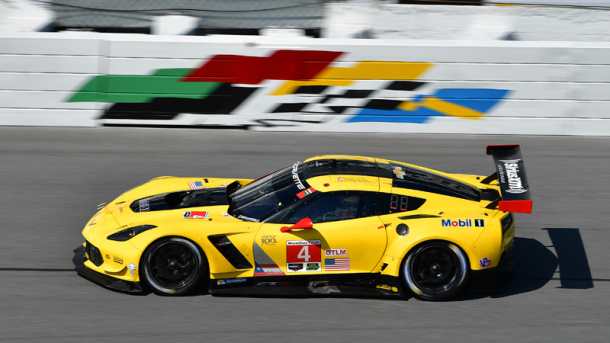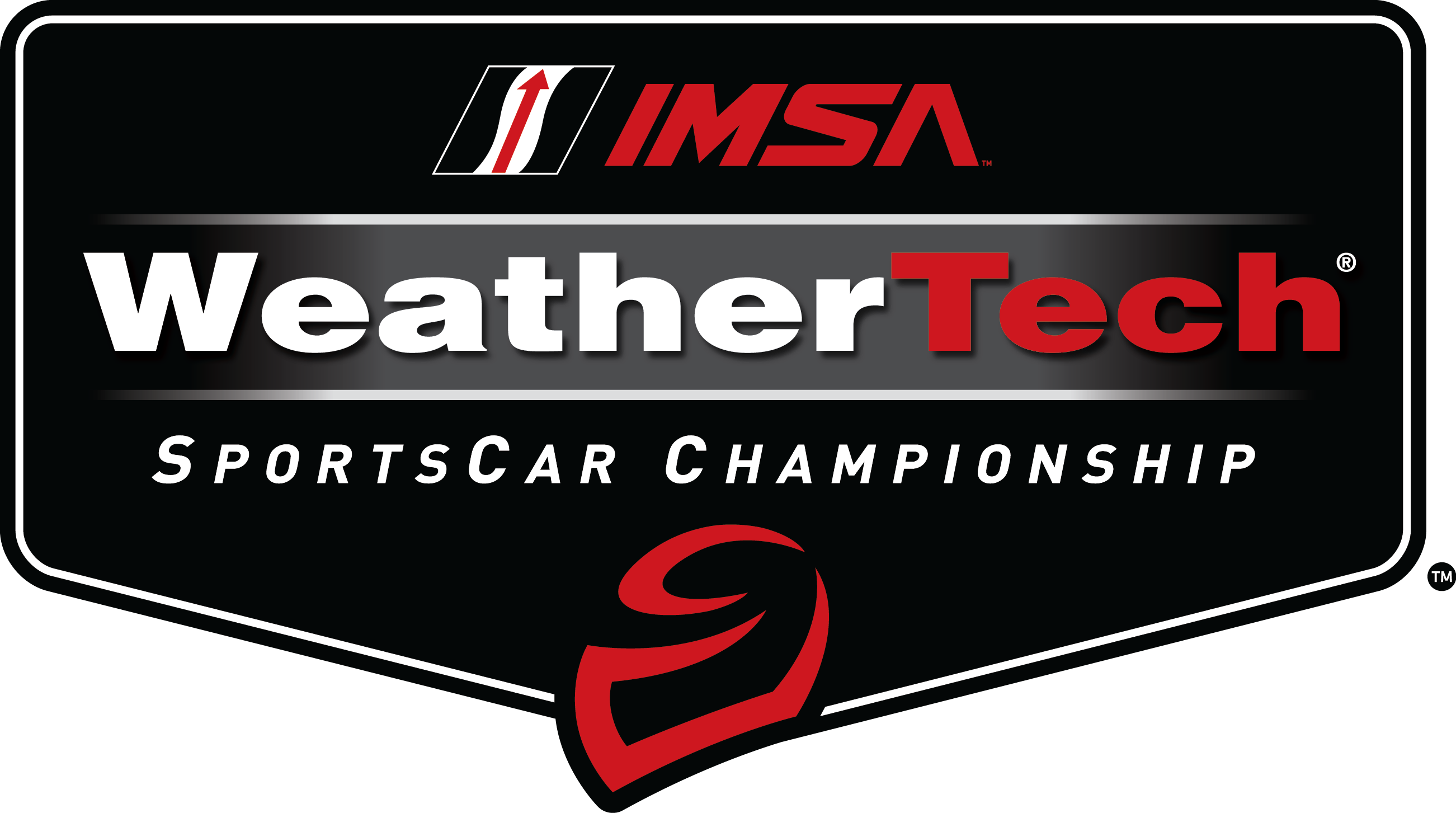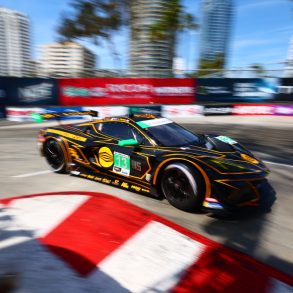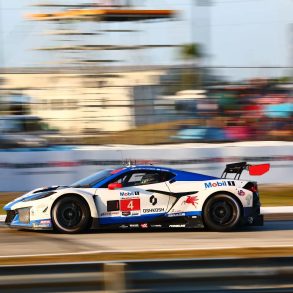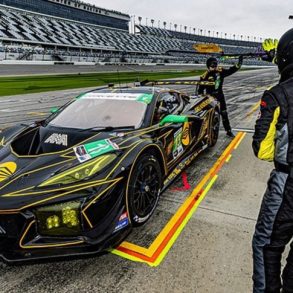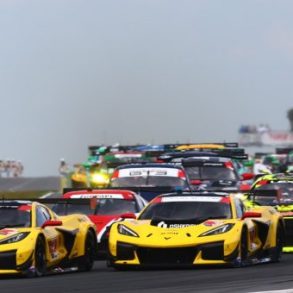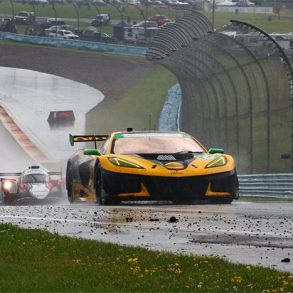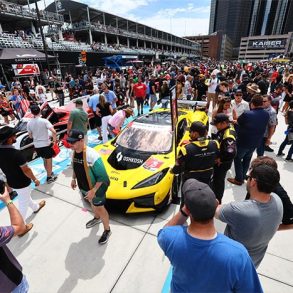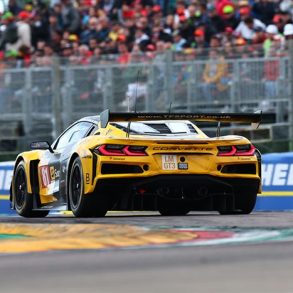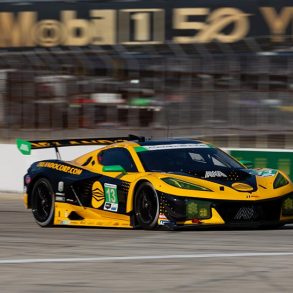The IMSA WeatherTech SportsCar Championship Explained
Each year in early January, Corvsport.com begin publishing stories about the Corvette Racing program. That’s because in January of each new year, the IMSA (International Motor Sports Association) begins a new season of its WeatherTech SportsCar Championship. This championship season, which is comprised of twelve races – eleven across the United States and one in Canada – is arguably one of the most exciting series in all of Motorsports. For the uninitiated however, it can be a confusing sport made up of multiple classes of cars, dozens of complex rules and an obscure points (scoring) system that, left unexplained, makes the venue difficult to understand or follow.
In an effort to make the IMSA WeatherTech SportsCar Championship more accessible, we felt it was time to formally introduce our fans and followers to the sport, especially given that the Corvette Racing program is one of the most successful teams participating in this venue each year.
An Introduction to the WeatherTech SportsCar Championship
As stated above, the IMSA WeatherTech SportsCar Championship is a twelve-race event spread across North America. The series begins at the Daytona International Speedway in Daytona Beach, Florida each January and concludes at Road Atlanta in Braselton, Georgia each October.
The championship series features two styles of race car:
- Prototype – Cars which showcase the latest automotive technology and are uniquely designed for the racetrack.
- Grand Touring (GT) – Cars that are based on road-going production models.
Each of these styles of race car are further divided down into two classes. The Prototypes are divided into the Daytona Prototype International (DPi) and the Le Mans Prototype 2 (LMP2) classes. The Grand Touring cars are divided into the GT Le Mans (GTLM) and GT Daytona (GTD) classes.
Daytona Prototype International (DPi)

The fastest and most technologically advanced sports cars in North America, the Daytona Prototype International (DPi) is specifically designed and engineered for the race track. DPi cars use chassis built to international specifications and are powered by engines from mainstream automotive manufacturers like Acura, Cadillac, Mazda, and Nissan. Additionally, DPi bodywork includes styling cues that align with these engine manufacturers.
LeMans Prototype 2 (LMP2)

The Le Mans Prototype 2 (LMP2) is a closed cockpit car developed by four approved constructors. In addition to the IMSA WeatherTech SportsCar Championship, LMP2 cars are eligible to compete in other global series such as the FIA World Endurance Championship, which includes the prestigious 24 Hours of Le Mans.
Grand Touring Le Mans (GTLM)

Utilizing the same technical regulations as the 24 Hours of Le Mans, the GTLM cars are the most elite and fastest GT cars on the track. Based on production models, they are engineered to extract the maximum performance possible. The class serves as a true proving ground for leading manufacturers including BMW, Chevrolet, Ferrari, Ford, and Porsche.
Grand Touring Daytona (GTD)

The GT Daytona cars are enhanced (not defined by) technology and utilize the global FIA-GT3 specification. The GTD class consists of cars from leading manufacturers including Acura, Audi, BMW, Ferrari, Lamborghini, Lexus, Mercedes-AMG, and Porsche.
Which Class Is Which?
Because all four classes of car race simultaneously at each championship venue, the cars carry unique identifiers that help fans follow the on-track action. For starters, each car class has its own color-specific number placard: The Daytona Prototype has a black background with white numbering, the LeMans Prototype has a blue background with white numbering, the GT LeMans has a red background with white numbering and the GT Daytona has a green background with white numbering.
Additionally, each class uses a Leader Light System. This system allows fans to easily identify the field position (running order) of each car in its respective class. The position of the car is displayed on an LED panel which is mounted to the side of the car. Like the number placards, each color of the LED numbers correspond with the car’s class. For example, an illuminated LED red number “1” on the side of the GTLM C7.R Corvette means the car is running in 1st position in the GTLM class.
Before the Race
Vehicle Inspections
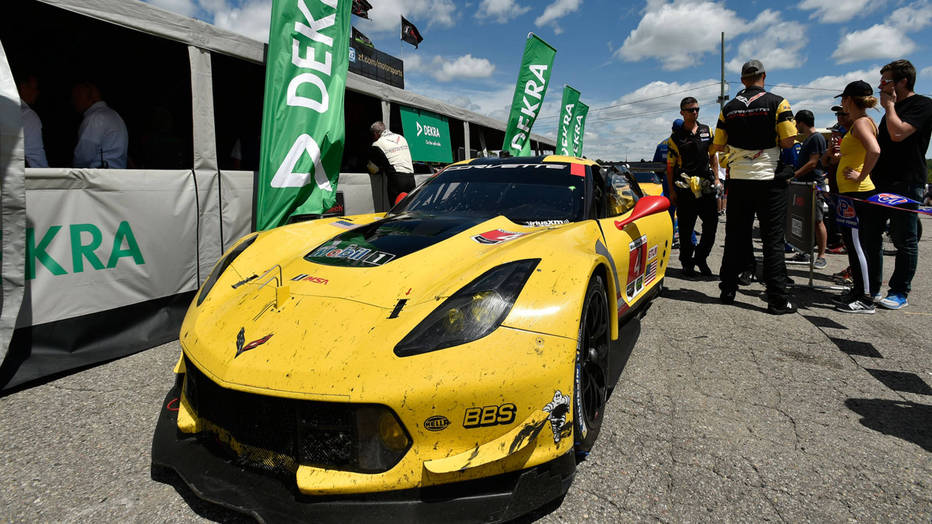
Before any of the cars (in any class) are permitted to compete in an IMSA sanctioned event, they must go thru a vehicle inspection. These inspection are performed by a European vehicle inspection company known as DEKRA. As the official Technical Partner of IMSA, DEKRA provides third-party verification that each race car is in compliance with IMSA’s standards. The inspections are performed prior to each race and following each qualifying race to ensure the vehicle standards are unaltered. Similarly, DEKRA inspects the top finishers in each class at the completion of the race to validate that the car maintained IMSA standards throughout competition.
In addition to maintaining fairness within the fields of competition, DEKRA is also the title sponsor of the DEKRA Green Award. In conjunction with the IMSA, the Environmental Protection Agency (EPA), the United States Department of Transportation (DOT) and the Society of Automotive Engineers (SAE), the Green Award is presented to the GT Le Mans team that runs the most efficient and most environmentally clan vehicle.
Flags
Throughout an IMSA race, the governing officials of the event communicate with the drivers via a series of both audio and visual cues. While most of the communication between drivers and their teams, racing officials and other event judges is largely communicated through vehicle-to-pit-crew (and vice versa) radio transmissions, the tradition of using flags to send visual communications to drivers throughout a Motorsports event is almost as old as the sport itself, and it has remained an integral part of racing tradition.
At the same time, the flags in racing provide drivers with important information throughout the race. For spectators watching the race, understanding what each flag represents helps to better understand what the cars on the field are doing.
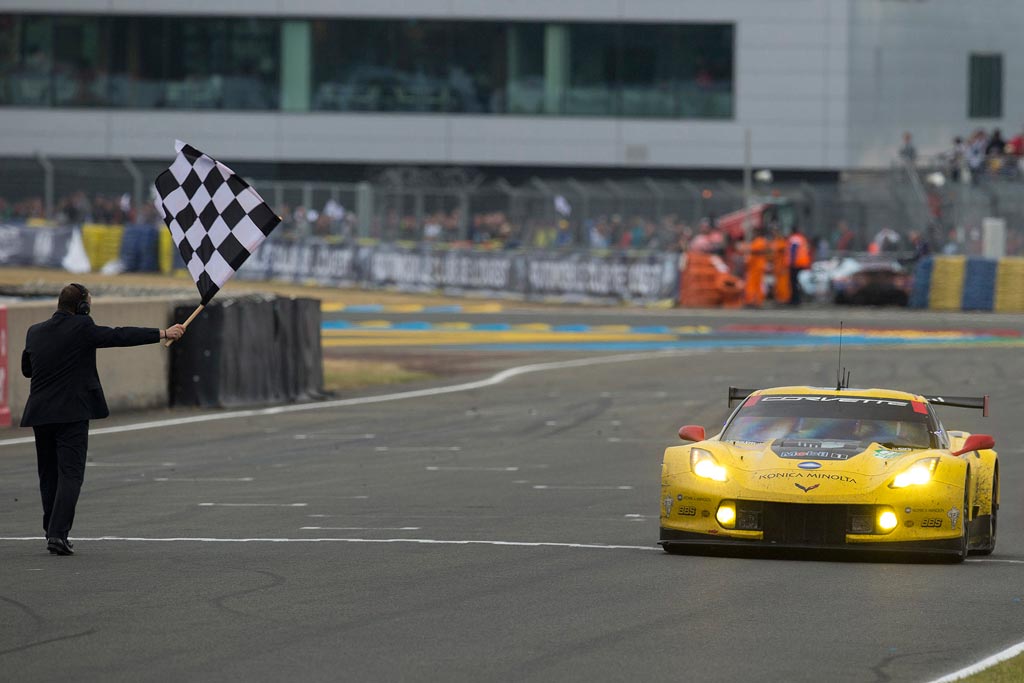
Here is a comprehensive list of each flag used in the IMSA WeatherTech SportsCar Series and what each of these flags means:
- GREEN FLAG – This flag is waved at the start of the race, practice or qualifying session, or at the restart following a full-course caution.
- YELLOW FLAG – When held stationary at any of the flag stations around the track, this flag means means there is danger. It requires the drivers to slow down and keep their track position in that part of the track due to an incident in the area. A waving yellow also signifies extreme danger and/or course workers are on the course.
- WHITE FLAG – This flag is waved at the start/finish line with one lap to go. When the flag is held stationary, it indicates an emergency vehicle on the course or a much slower race car ahead.
- CHECKERED FLAG – This flag is waved at the finish of the race, practice or qualifying session.
- RED FLAG – This flag is displayed at the start/finish line to stop the race or session for safety reasons or because of weather conditions. When this flag is presented, all competitors must proceed to the pits and be prepared to stop at any time.
- BLUE FLAG – This flag alerts drivers that faster traffic is approaching. If waved, the competitor must give way to the driver trying to pass.
- DOUBLE YELLOW FLAG – This flag signifies a full course caution when displayed at the start/finish line or around the course. All cars must slow and maintain their position in line behind the pace car.
- YELLOW FLAG WITH RED STRIPES: This flag is displayed when there is a slippery surface or debris on the track.
- BLACK FLAG WITH ORANGE DISK (MEATBALL): This flag informs a specific driver that he/she must report to the pits due to a mechanical problem.
- BLACK FLAG – When this flag is displayed to the field, the competitors must proceed to the pits. A black flag displayed to a single competitor indicates that a driver must report to the pits immediately due to a rule infraction. If the flag is displayed to a competitor in a furled manner, the competitor is warned to discontinue an act of unsportsmanlike conduct or they will be penalized. Stationary black flags are held around the course when the red flag is displayed at the start/finish line, warning drivers that they are to reduce speed, to head to the pits and to inform drivers that they may be stopped at any time.
Qualifying
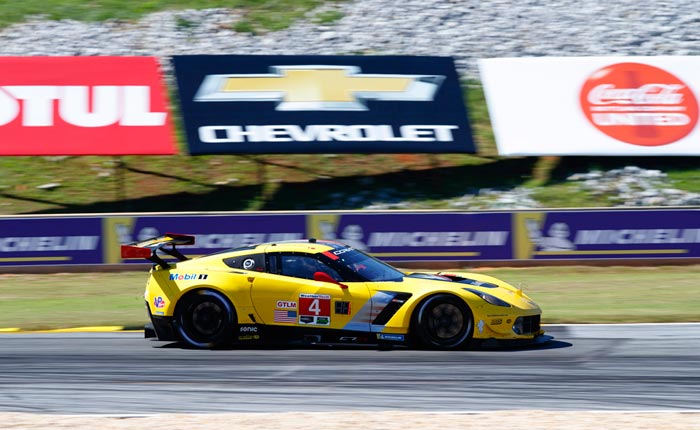
In preparation for each race throughout the season, the teams in each class will arrive at the track a week or more in advance of the scheduled race event. During the course of the week leading up to the race, each team will have the opportunity to participate in several practice sessions. These sessions give the drivers and their crews time to “dial-in” the cars before running their qualifying laps.
After these practice sessions are complete, the teams will participate in a brief – but critical – qualifying session to determine where their car will start the race. Qualifying is an integral part of any race event and provides significant advantage to the drivers that have the best qualifying times.
How It Works
The WeatherTech SportsCar Championship qualifying is broken into four separate 15 minute sessions, one for each of the aforementioned classes that participate in this series. At the completion of each 15 minute qualifying session, the driver that manages the fastest lap (shortest time) earns the Motul Pole Award and starts the race at the front of their car’s designated racing class. The second fastest qualifier stars in second position, the third fastest in third, and so on.
Per IMSA rules, only one driver is permitted to drive the car during the qualifying event and it is not mandatory that the driver use the entire 15-minute session. However, drivers will often use the entire session in an attempt to obtain the fastest laptime possible. During qualifying, drivers may come into the pits and make minimal adjustments to their cars with the permission of IMSA officials.
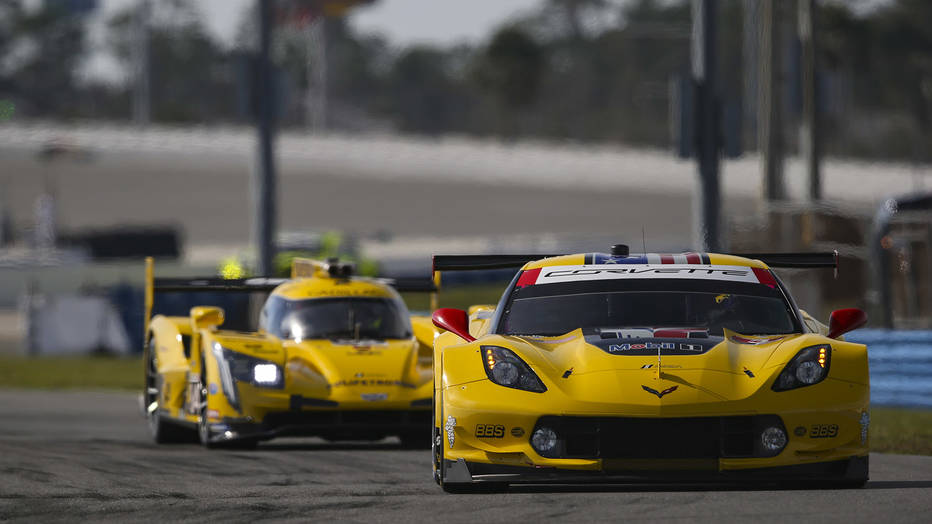
Under certain circumstances (severe weather conditions, for instance), qualifying may be cancelled. When this happens, the starting grid for the race is determined and set by team points earned leading up to that race. The higher the team’s standing in the points, the higher they are placed in the starting grid of the upcoming race.
If a driver causes a red flag during qualifying, that driver loses their fastest lap from the qualifying session. This rule is in-place to help enforce ethical behavior on the racetrack throughout the qualifying sessions.
Starting the Race
After a week of testing, practice laps, vehicle inspections and qualifying laps, it all comes down to the day of the race. In the IMSA WeatherTech SportsCar Championship series, each venue can vary in length from a couple hours (like the Acura Sports Car Challenge at Mid-Ohio in early May) to a full twenty-four hours (like the Rolex 24 at Daytona, which will take place on January 26-27, 2019.)
On the day of the race, all of the cars are lined up based on their qualifying times on the front race grid near the start/finish line of the track. Prior to the start of the race, the IMSA WeatherTech SportsCar Championship allows spectators the opportunity to see the cars up close and to meet their favorite drivers during an Open Grid/Fan Walk. This Fan Walk lasts about 30 minutes and gives spectators plenty of time to see each of the cars in the grid.
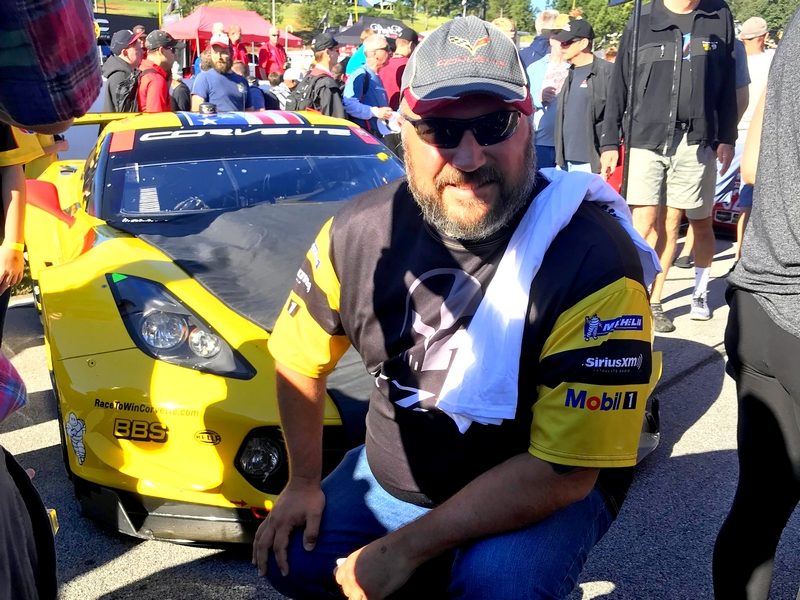
Once the race grid is cleared and all spectators are safely behind the fence/track barriers, it is time for the drivers to climb into their cars and prepare for the start of the race. As other race festivities unfold – from the singing of the National Anthem to the benediction – the competitors are reminded the it is impossible to win a race in the first turn of the first lap – but that its very easy to lose a race that way. Once secured in their vehicles, the command is given for the drivers to “start their engines!” The cars are led out onto the racetrack by a pace car and several pace laps are completed, allowing the drivers to properly form the starting field prior to the waving of the green flag.
Once the green flag is waved, the clock is officially started and the race is underway. Unlike NASCAR, which recognizes the winner as the first driver to complete a prescribed number of laps, IMSA racing recognizes a winner based on the most laps completed during a prescribed amount of time at each track. Each driver will attempt to complete the highest number of laps possible. For drivers on the lead lap (the highest number of laps completed by any driver in a given class), the finishing position is determined by the order at which each car crosses the finish line. For example, if the No. 3 and No. 4 Corvettes both complete 235 laps in a race, but the No. 3 Corvette crosses the finish line ahead of the No. 4, then the No. 3 will earn the higher position on the finishing grid.
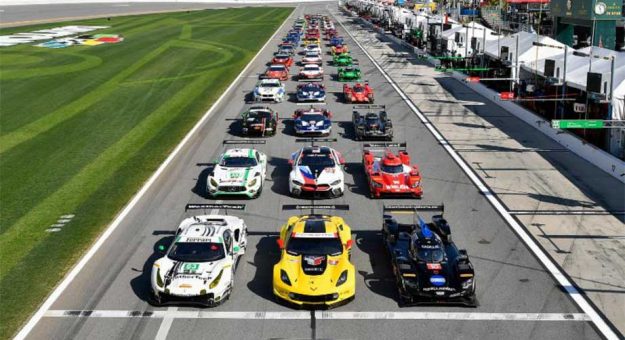
While the performance of each team is critical throughout the duration of each race, the start of the race (first ten laps) and the conclusion of the race (the last 30 minutes) are often the most thrilling parts of the entire event and will often serve as a turning point for teams that are close throughout the competition.
PIT STOPS
Pit-Stops are a critical part of each race. No car has the ability to run an entire race without re-fueling and/or changing tires, and teams may also require pit stops to correct mechanical issues or repair body damage as the result of impact with other cars on the track. The speed and accuracy of the pit crew has a direct and significant impact on how the driver/car will perform in each event, and a poorly planned and/or poorly executed pit stop can often mean the difference between winning the race and ending up back in the field.
Consider this – a typical pit stop lasts approximately 25 seconds (and often less time than that.) Could you imagine pulling you car into a gas station, filling up your fuel tank and replacing all four of your car’s tires in less than 25 seconds? That’s exactly what happens each time a car comes in for a full pit-stop….and for spectators, its one of the most amazing parts of the race to watch.
What To Watch For/Driver Changes
No one is permitted to come over the pit wall until their team’s car comes to a complete stop.
Once the car is in the pit box, four crew men are then designated to perform routine work on the car, such as re-fueling the car and tire changes. When need, the crew can also service other mechanical work, which includes (but is not limited to) changing brake pads and rotors, adjusting the aerodynamic wing and repairing body damage from contact with other objects (cars, retaining walls, etc.)
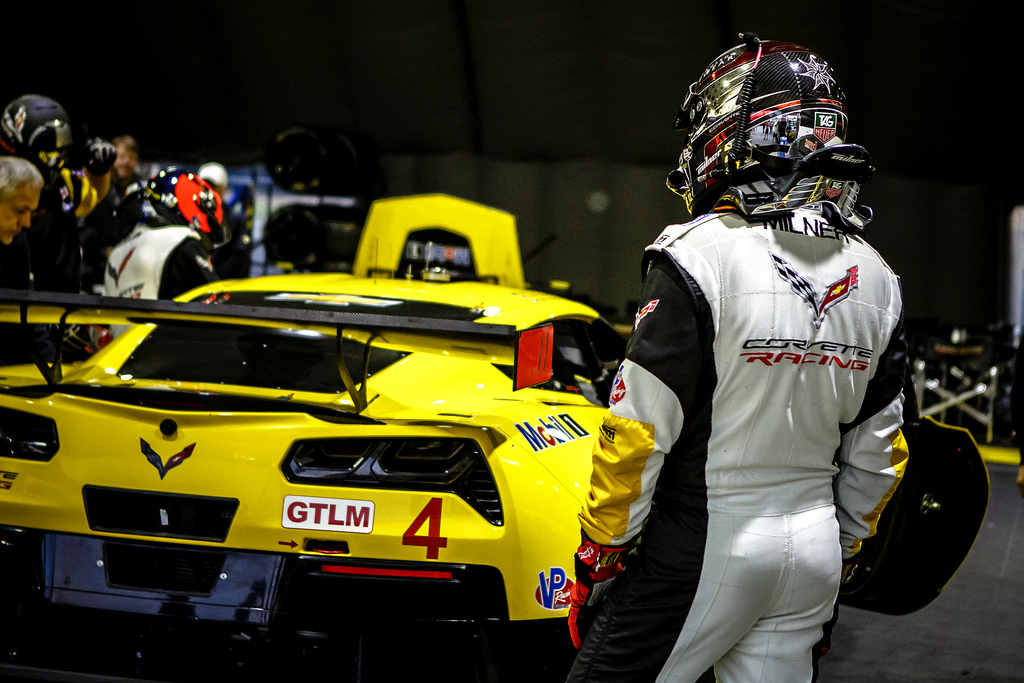
A minimum of two drivers are required for every race – with up to three to five drivers supporting a team at endurance races like those held at the Daytona International Speedway, Sebring International Raceway, Watkins Glen International and Road Atlanta. When a driver change takes place, one crewman is allowed over the wall to assist the driver as he/she enters the car. This crewman is responsible for connecting the incoming driver’s radio, air-hoses, drink tube and safety belts.
A speed limit of 60 kilometers per hour (37 miles per hour) is strictly enforced for all cars entering/driving in the pit lane. Any driver caught speeding must serve a drive-through penalty down pit lane or risk being black flagged during the race.
2019 Season – Scheduled Races
While many of the IMSA WeatherTech SportsCar Championship races are televised, there is nothing quite like being trackside for one (or more) of these amazing races. Between the sound of the engines, the smell of race-fuel and the spectacle of seeing dozens of incredible race cars reaching speeds close to 200 miles per hour, attending a race is an experience you’ll never forget.
Here is a list of all the races scheduled for the 2019 Season:
- JAN 24 TO JAN 27 – ROLEX 24 AT DAYTONA
-
Daytona Beach, FLRace Duration: 24 hoursCircuit Length: 3.56 miles
-
- MAR 13 TO MAR 16 – MOBIL 1 TWELVE HOURS OF SEBRING PRESENTED BY ADVANCE AUTO PARTS
-
Sebring, FLRace Duration: 12 hoursCircuit Length: 3.74 miles
-
- APR 12 TO APR 13 – BUBBA BURGER SPORTS CAR GRAND PRIX AT LONG BEACH
-
Long Beach, CATrack: Long Beach Street CircuitRace Duration: 1 hour 40 minutesCircuit Length: 1.968 miles
-
- MAY 03 TO MAY 05 – ACURA SPORTS CAR CHALLENGE AT MID-OHIO
-
Lexington, OHTrack: Mid-Ohio Sports Car CourseRace Duration: 2 hours 40 minutesCircuit Length: 2.4 miles
-
- MAY 31 TO JUN 01 – CHEVROLET DETROIT GRAND PRIX PRESENTED BY LEAR
-
Detroit, MITrack: Raceway at Belle Isle ParkRace Duration: 1 hour 40 minutesCircuit Length: 2.35 miles
-
- JUN 27 TO JUN 30 – SAHLEN’S SIX HOURS OF THE GLEN
-
Watkins Glen, NYTrack: Watkins Glen InternationalRace Duration: 6 hoursCircuit Length: 3.4 miles
-
- JUL 05 TO JUL 07 – SPORTSCAR GRAND PRIX
-
Bowmanville, ONRace Duration: 2 hours 40 minutesCircuit Length: 2.459 miles
-
- JUL 19 TO JUL 20 – NORTHEAST GRAND PRIX
-
Lakeville, CTTrack: Lime Rock ParkRace Duration: 2 hours 40 minutesCircuit Length: 1.50 miles
-
- AUG 02 TO AUG 04 – ROAD AMERICA
-
Elkhart Lake, WITrack: Road AmericaRace Duration: 2 hours 40 minutesCircuit Length: 4.0 miles
-
- AUG 23 TO AUG 25 – MICHELIN GT CHALLENGE AT VIR
-
Alton, VARace Duration: 2 hours 40 minutesCircuit Length: 3.27 miles
-
- SEP 13 TO SEP 15 – WEATHERTECH RACEWAY LAGUNA SECA
-
Monterey, CARace Duration: 2 hours 40 minutesCircuit Length: 2.238 miles
-
- OCT 09 TO OCT 12 – MOTUL PETIT LE MANS
-
Braselton, GARace Duration: 10 hoursCircuit Length: 2.54 miles
-


